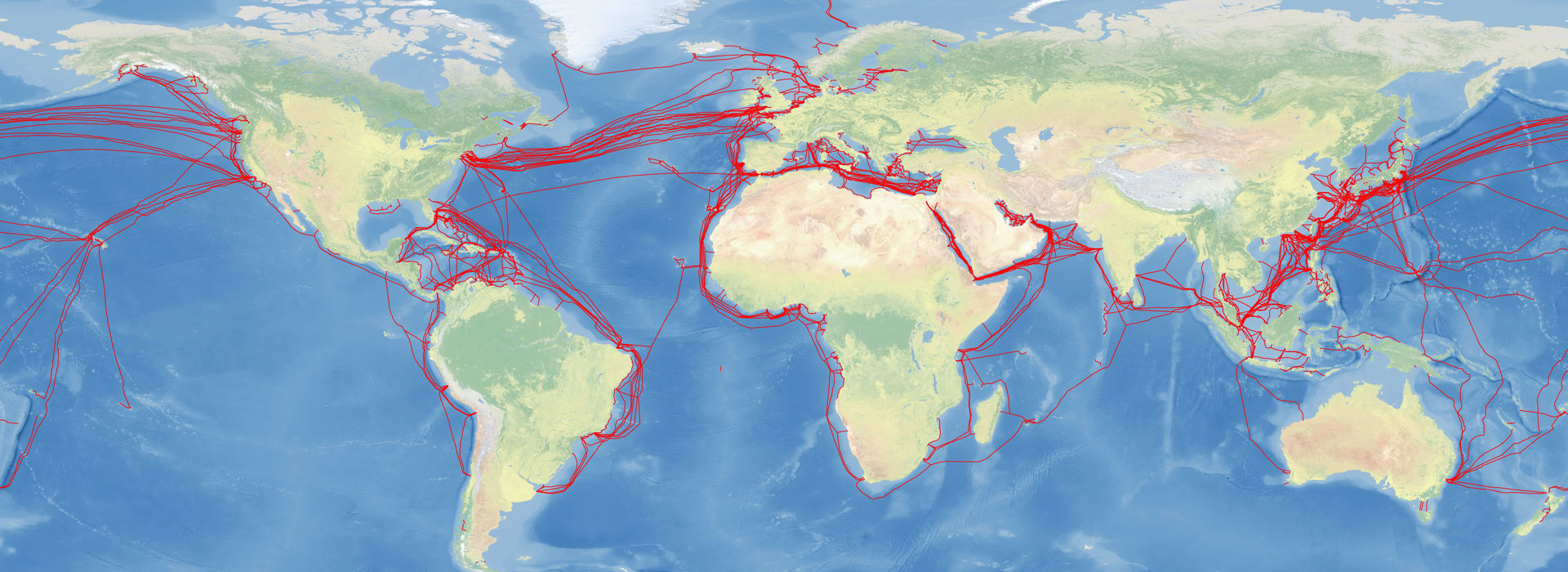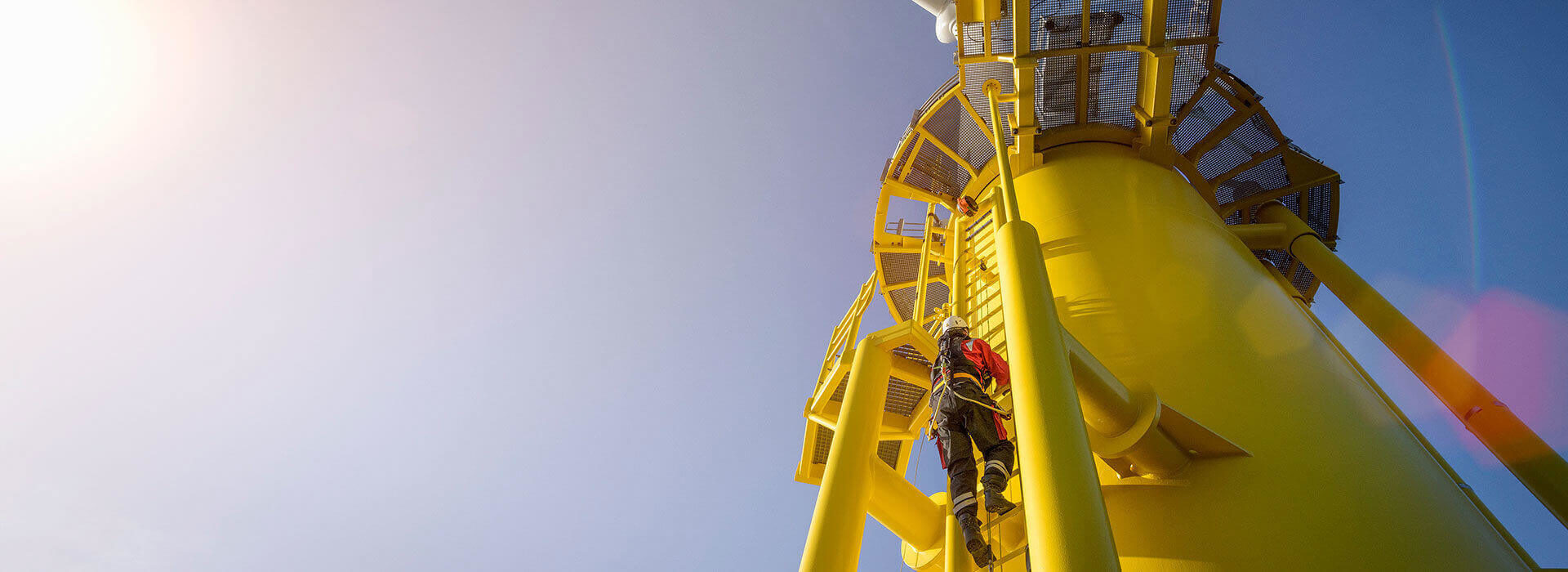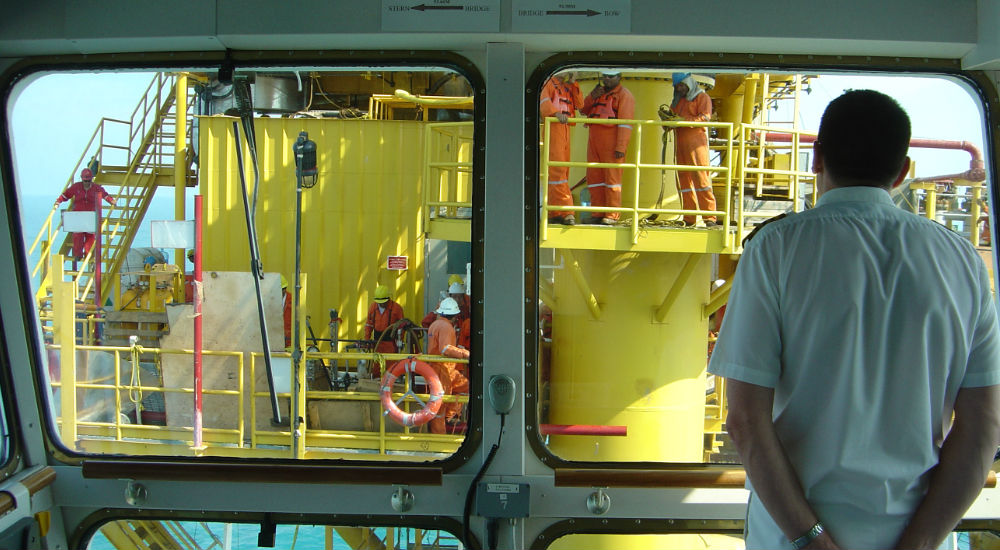Contact Us
An in-depth insight into how the work of Global Marine is changing during the coronavirus pandemic.

We are living through unprecedented times. Not just for individuals but for businesses, governments, and global markets as well.
The impacts of the COVID-19 outbreak have been well documented as it continues to impact multiple industries, putting a complete halt to some and severely hampering others from functioning effectively. One silver lining that we can take from the current crisis is that many people and businesses have been able to transfer to home set-ups.
Thanks to a combination of fast in-home internet speeds and sustained power, most can work remotely and try to conduct business as close to usual as is possible. However, this has made millions of workers across the UK wholly dependent on their home internet, and by extension, the power grids that keep it all running.
With the increased strain on the UK’s power and fibre optic infrastructures, it’s more important than ever that the systems we rely on are well maintained.
And a large part of this process is ensuring that the web of subsea cables that keep our power on and our internet connected, remain fully operational.
In this long read, we’ll examine how Global Marine Group’s individual companies – Global Marine, Global Offshore, and CWind – and their staff are part of an often unseen world that ensures, even in these difficult times, the internet stays connected, the lights stay on, and power is generated.
For those that aren’t immediately familiar with subsea telecoms cable installation and maintenance, or the services that Global Marine provides, it may be a surprise to learn that the world’s internet is connected in the main by an intricate series of underwater cables – an unnoticed spider’s web that transmits data everywhere, in seconds.
In total, the cables span hundreds of thousands of miles, across almost all of the world’s largest oceans. And they are incredibly fast. For instance, the Marea cable, which reaches from northern Spain to the eastern United States, transmits 160 terabits of data per second. This demonstrates quite clearly how powerful these cables are and how vital they have become to global communication.
Broken cables are cut and retrieved from the seabed before being repaired onboard a cable maintenance vessel.
It should come as no surprise that internet usage in the UK has spiked dramatically in recent weeks. On 16th March, the London Internet Exchange, which tracks and monitors internet transmissions throughout the country, showed a peak of 3.86Tbps. By comparison, at the end of the 27th March – the second full week of COVID-19 lockdown – the exchange recorded peak traffic at 4.52Tbps.
The story is similar for various internet providers across the country. Vodafone, which serves 18 million customers in the UK, reported that data usage had spiked by 30% during the period of lockdown. In some European countries, usage has gone up by nearly 50%, as more and more people rely on the internet to work, relax, and communicate with others. Virgin Media, which has over five million customers, has also reported increases in data use as the crisis increases in intensity.
It’s important to note that whilst these spikes are unprecedented, we are far from a situation where cables and servers will be overloaded.
What this demonstrates – other than just how much data we consume on a daily basis – is how reliant we are on the internet right now.
But on a grander scale, telecoms technologies are helping governments share information internationally, helping labs run tests, and enabling hospitals to provide the critical care that is required. Without the data supplied through hundreds of subsea fibre cables, coordinating a response is a lot more difficult. Global Marine’s work is part of an ecosystem that allows life to continue as normally as possible, whilst supporting those that are on the frontlines.

Subsea cables are looked after in maintenance zones or clubs around the world.
At Global Marine, one of our primary duties is to ensure that subsea fibre optic cables are properly maintained, so they can continue to transfer data across continents.
We carry out repairs when a cable is damaged and improvements when updates are required. Global Marine is part of a large network of companies and contractors that keep the internet going – even in times of crisis.
Currently, we provide tailored subsea telecom maintenance services to around 120 authorities around the world, who form maintenance zones or “clubs”.
We have vessels on standby across the globe to react within hours to a callout on a faulty or broken cable across the Atlantic Cable Maintenance Agreement (ACMA), the North American Zone (NAZ), and the South East Asia and Indian Ocean Cable Maintenance Agreement (SEAIOCMA). These zones, maintained by Global Marine, cover 360,000km of the 1.2 million kilometres of in service cable.
Our work in these zones ensures that should a cable fault occur, we are on-hand to make swift repairs with limited downtime – so there is little to no dip in data transference. And in the years that we have been operating, we have installed 21% of the world’s total subsea cable, and performed over 1,100 or 33% of maintenance operations on fibre optic cables around the world.
Giant trenchers such as the Q1400 are used to bury and protect cables on the seabed from unexpected intervention and damage.
As you can imagine, maintaining thousands of metres of fibre optic cable is no small task, which is why we rely on a combination of modern vessels, state-of-the-art ROVs, and experienced engineers and jointers to get the job done. Once a cable fault is detected, we determine the best, fastest course of action to ensure the connection can be restored.
Faults could be close to the shore in relatively shallow waters, or they could be at great depths, in the middle of the ocean. In order to repair these types of faults, we use a number of sophisticated Remotely Operated Vehicles (ROV) that can be submerged thousands of metres underwater. These highly-advanced machines are capable of locating and carefully handling cables that are millimetres in diameter off the seabed, ensuring that there is no further damage. Once the issue has been identified and a solution determined, we can use the ROV to pull the cable onto the ship, where repairs can then be carried out.
Through a combination of expert planning and advanced technology, we are able to make the necessary repairs and get the cable back online with limited downtime.

Cable landings connect the asset securely back to shore.

Subsea cables are carefully deploy from the back of specialist cable installation vessels.
As we rely on undersea cables to ensure our internet connections, we do the same for power. The energy that heats our homes, keeps the lights on and powers the modems that keep the internet flowing into our lives is transported from its original sources and between countries through a series of cables that connect offshore power generators – such as oil and gas rigs and, more recently, renewable sources such as wind farms – to the National Grid. And as an island, the UK is more dependent than most on these cables being properly maintained, especially in times of crisis.
However, these subsea cables are not limited to transferring energy from offshore resources to the mainland. They are also vital in sharing power between us and our European neighbours, through a series of interconnectors which allow the transfer of electricity across borders.
Currently, there are 4,000 MW of operational connectors linking the UK with its closest neighbours – the Republic of Ireland, France, and the Netherlands – and this is set to increase in the next few years. In fact, the North Sea Link, an ambitious project that will be the longest subsea power interconnector, is already well underway.
These trans-national interconnectors allow countries to trade and transfer power, ensuring a steady supply, managing fluctuations, and stabilizing prices for consumers. The importance of the interconnectors and cables is obvious, especially in the midst of the COVID-19 outbreak, so it’s vital that they are well maintained and quickly repaired should a fault occur.

Cables owners keep subsea cable spares in strategically located depots around the world in case of repairs or faults.
Whilst the UK’s internet consumption has spiked during the COVID-19 lockdown, the impact on power supplies is a different story. In fact, demand has reduced significantly in the past few weeks. This is due to many businesses and commercial spaces having to close in order to comply with government guidelines.
Under usual circumstances, industrial and commercial demand make up around 47% of all energy consumption. So while domestic use has risen, the UK grid is missing a large proportion of its normal demand. For example, the energy consumption at the end of March was 20% lower than at the beginning of the month.
With energy demands remaining lower than average, the main threat that COVID-19 poses to the nation’s energy supply is the impact it could have on the workforce. Fears are growing that a shortage of engineers – due to illness or self-isolation – could lead to disruptions across the power network. Therefore, it’s even more critical that faults that occur outside of the mainland are quickly and effectively resolved, ensuring a steady supply of energy to the network.
Global Offshore is involved in multiple elements that ensure the proper running of subsea power cables. From our base in Aberdeen our highly experienced engineers and management teams have installed over 850 power cables for the oil, gas, and renewable energy markets.
We are also deeply involved in maintenance and cable repairs – keeping the flow of energy intact through difficult times. We have a long history of cable installation and planning, making it a pillar of our service offering. In fact, the Global Marine Group has installed over 300,000Km of subsea cables across the globe – nearly 21% of the total – and we continue to provide expert cable installation and burial throughout the UK’s waters and beyond.
Global Offshore has also been responsible for connecting the country with greener energy, having worked on over 50 wind farms across Europe – ensuring that the power we continue to get is more sustainable. These vital power cables help to keep the country on: 24 hours a day, 365 days a year!
Giant plough and trenchers are used to bury and protect cables on the seabed from unexpected intervention and damage.
In normal circumstances, the speed of maintenance is always imperative but in the current environment, it’s practically critical. With so many people and urgent services relying on power across the country, it’s more important than ever that we deliver fast, effective maintenance wherever it’s needed.
Global Offshore’s Complete Cable Care solution, offering customers framework agreements with pre-engineered solutions, means that cables on the seabed get fast and effective maintenance should any unplanned repairs be required. This significantly reduces the risk of power shortages and minimises disruption for the energy developers and operators. For example, the typical revenue loss of a single 6MW turbine being offline for a day is £10,000. And in the economic climate presented by the development of COVID-19, that is not something that wind farm operators can stand to lose regularly. And with nearly 20,000km of power cables estimated to be installed in northern European waters by the end of the decade, the number of repairs is naturally going to increase.
Our recently agreed framework with Balfour Beatty covers 152km along the east coast of England, enabling us to respond to all manner of faults as efficiently as possible. Whilst this is an obvious benefit to subsea power cable owners and operators, regardless of circumstances, it’s especially important during the COVID-19 outbreak, as it allows us to restore full functionality in less time, ensuring that the negative impacts are lessened.

Purpose-built vessels such as the Global Symphony are used to install and maintain subsea cable.
Crew transfer vessels are used to take technicians offshore to compete vital maintenance work on offshore turbines minimising the risk of downtime.
As we’ve examined the increased strain and reliance on telecommunication and power cables, it’s also important to consider how vital the power generation is at this moment in time. After all, the oil, gas and renewable industries – and the men and women that are selflessly committed to keeping them running – are ensuring the UK can respond effectively to the coronavirus and can self-isolate in relative comfort.
CWind plays a vital role in this infrastructure, providing logistics and personnel for essential maintenance of offshore wind farms throughout the UK. And during the COVID-19 lockdown, the company continues to provide support to offshore power generators, maintaining output levels and ensuring that demand can easily be met.
CWind teams are focused on ensuring that wind farm output remains effective throughout the year. Working in tandem with other units of the Global Marine Group, this includes inspections, subsea surveys, and temporary power.
Even in this time of crisis, repairs and maintenance are still being carried out, and crews are still ensuring that works are completed to the highest possible level. And like the solutions provided by Global Marine or Global Offshore, this service ensures the constant supply of power to the United Kingdom, so our collective, critical infrastructure can remain strong in the face of a global crisis.

Cable installation vessels work closely with technicians on the turbines to complete the cable pull-ins

Turbine technicians are fully trained to safely work at heights to complete essential turbine maintenance.

Experienced and specialist teams of engineers work offshore around the clock.
During this crisis, Global Marine Group crew members, across all businesses, are continuing to repair subsea fibre optic cables, ensure power supplies are maintained, and service offshore wind turbines – so those on the frontlines can continue to combat the virus effectively.
While most of the work we do is unseen, and certainly doesn’t rival that being done by NHS staff, delivery drivers and shop workers up and down the country during this difficult time, the reliance that people have (and will have) on power and telecom infrastructure necessitates that we continue to operate. If faults occur on our watch, they need to be repaired quickly to ensure there are no extended periods of downtime.
A cable repair is a highly specialist activity that takes care and precision.
Like many other businesses, we don’t take the threat of COVID-19 lightly and are committed to doing everything we can to ensure that we are playing our part, whilst keeping our staff and our partners safe. As we have examined, during this time of uncertainty, the services that we provide are vital – potentially benefiting millions of citizens across the country and world.
Despite the threat of COVID-19 bringing many businesses, and even whole countries, to a complete standstill, there are still thousands of individuals doing their part to ensure that care is being provided, supplies are being delivered, and people stay connected.
—
While we don’t yet know how the COVID-19 pandemic will end, we know that it will be resolved faster as long as our basic infrastructures are maintained. So in order to ensure there are no disruptions, we are dedicated to offering our services where they are needed – so we can help keep the world on.